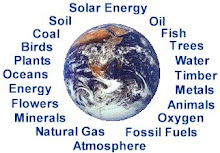As global warming continues to be a major concern for the future of our planet, people are starting to turn to green living practices to help save it for future generations. Green living involves every aspect of our daily lives - from driving to work to mowing our lawns.
Making the switch to green living all at once might scare most people away from implementing those earth-friendly changes. However, there are many ways to ease into this practice and help save the environment.
Air pollution is a major problem in many cities. Massive amounts of pollutant have been generated by factories, but that is not the only avenue contributing to global warming. Automobiles give off a fair amount of pollutants into the air as well.
When you have a lot of cars driving around on the city streets, you are multiplying the amount of pollutants being emitted by each car that is destroying our ozone. If you want to save the environment, you can start by either carpooling, walking more instead of driving or even purchasing hybrid models that do not contribute much damage.
This small change can bring much relief for the environment for future generations. There are many ways to adapt green living into your life by taking a look at your home. What kind of light bulbs are you using?
The standard bulbs we use contribute to higher electricity bills and higher levels of carbon dioxide. If you switch at least some of your standard bulbs with the compact fluorescent bulbs, you can save the environment and at the same time save on your electric bill.
Make sure to seal any gaps around windows and doors to keep any cold drafts from blowing into the house, which can cost you more money. Make sure the house is well insulated to help cut down on those costs in the wintertime. The less the furnace or heater has to run, the better off everyone will be.
Take a look at your appliances. Are they devouring too much energy? If they are older models, the answer is probably yes. While some of the changes are in the appliances that you use, other ways to go green involve your own habits and actions.
Do you open the oven door several times to check and see if something is done? The harder an appliance has to work, the harder it is on the environment. If you keep opening the oven door, the temperature will drop almost 25 degrees. It will then have to work harder to get back to the original temperature.
Recycling is an excellent way to save our environment. Try buying products that can be recycled and avoid the non-recyclable items such as Styrofoam cups. The less trash that has to be burned - or buried into our soil - the better off our planet will be.
These small changes may seem like they are not able to help much for the environment, but in reality they can help tremendously. Every little bit we do is a much-needed step toward reserving natural resources for our future generations. Get involved with the environment and start to make a difference in the practice of green living for our earth.
By :
Irahyanti Lahading
Hasmah Andang
[+/-] READ MORE...
[+/-] THANKS FOR READING...


 Water is an important natural resources. So, don't throw rubbish into it. Keep them clean!!
Water is an important natural resources. So, don't throw rubbish into it. Keep them clean!! Wildlife also one of the natural resources. Stop killing them! Boycott the things that are made from the wildlife. Stop the buying, and the killing will stop.
Wildlife also one of the natural resources. Stop killing them! Boycott the things that are made from the wildlife. Stop the buying, and the killing will stop.




